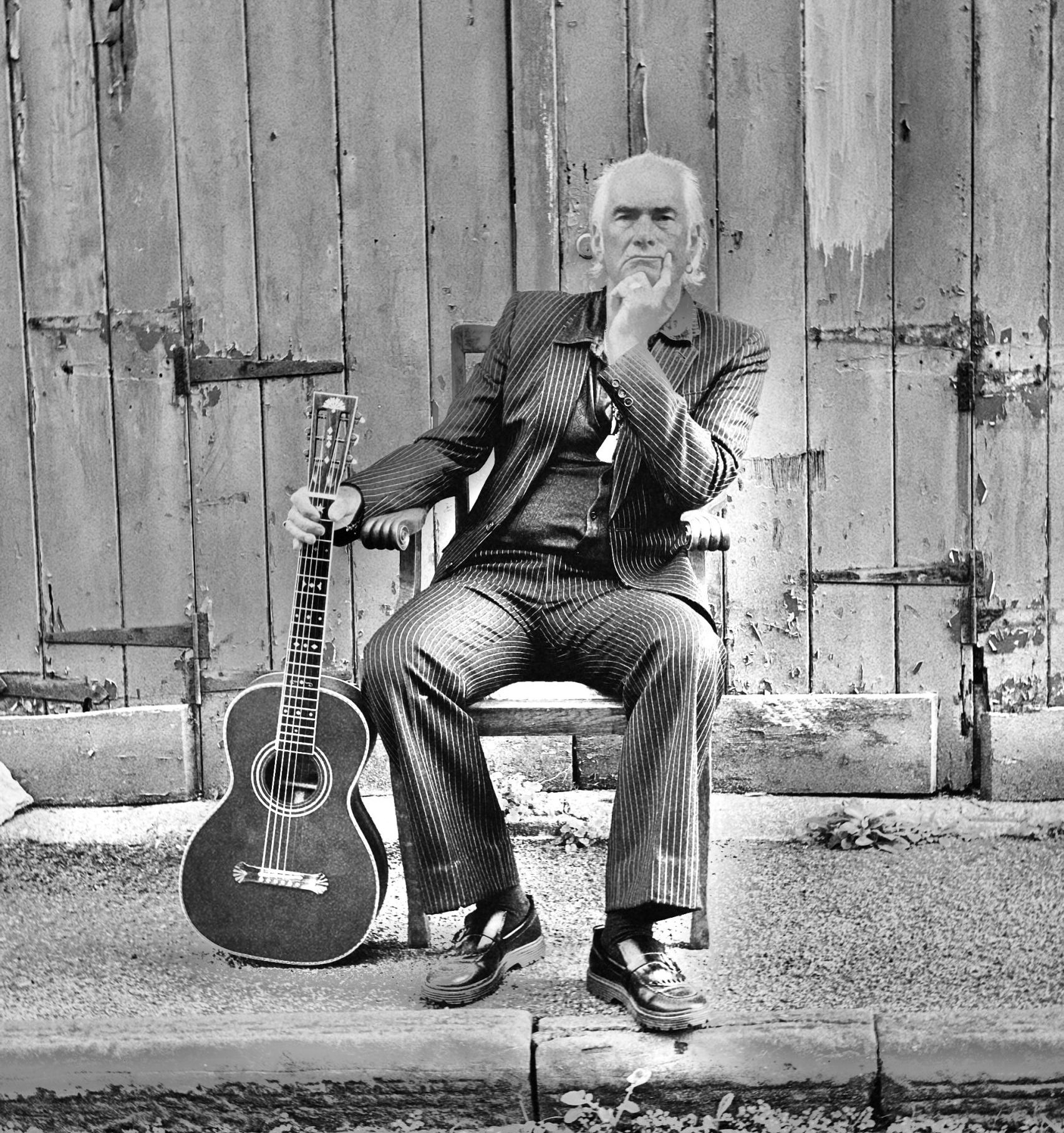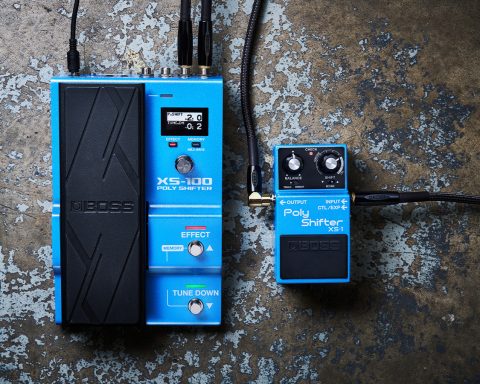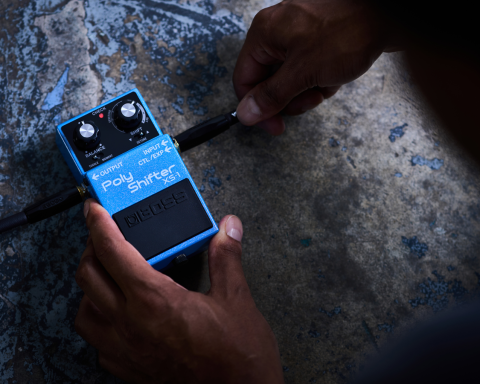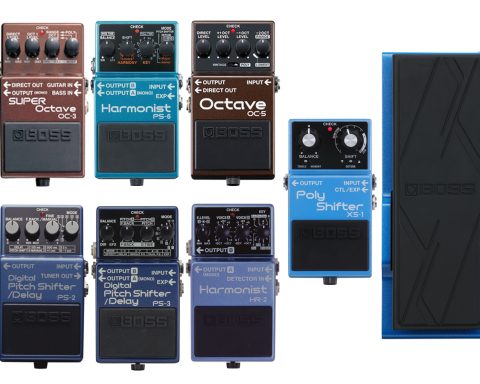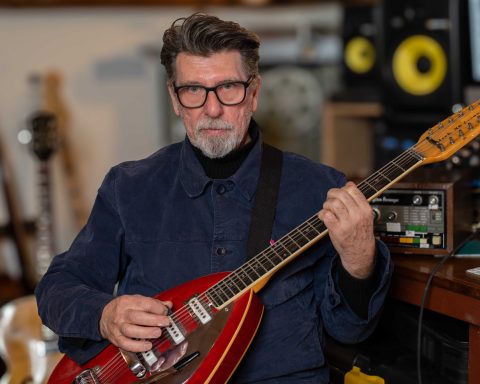Bristol-based tech Mike Crawford has accumulated decades of experience assisting some of the city’s best-known groups, including Portishead and Massive Attack. Further afield, Crawford has worked with the likes of Goldfrapp, Amy Winehouse, Edwin Collins, Grace Jones, Siouxsie Sioux, Sex Pistol Glen Matlock, David Bowie guitarist Earl Slick, Radiohead’s Philip Selway, and countless other notables. Crawford opens up about these artists’ pedal preferences and his own musical career.
Musician of Many Hats
Mike Crawford has worn many hats on the local, national, and international circuits: stage manager, guitar tech, keyboard tech, bass tech, and drum tech. “I’m basically a stage technician, which is a term that covers it all,” he begins. Crawford is also a talented performing artist, and he has recently recorded a new solo album, Rank Outsider, with producer and fellow Bristolian Stew Jackson (Massive Attack, Marc Ford, Emily Breeze).
“Being a tech is all about trust. The performer has to believe it’s all going to be fine,” Crawford highlights. Renowned for their roadworthy construction, virtually all the guitarists he’s worked with have relied on BOSS night after night to deliver the best performances possible. And while those artists often own the same BOSS pedals, each puts them to use uniquely.
“Artists who are genuinely confident about what they do don’t feel the need to hide how they do it,” Crawford points out. “Some people are protective when it comes to others knowing about the gear they use. But it’s equally about the player. You might try exploring how a certain musician managed to get a sound, try the same pedal, then end up with a different sound you prefer.”
Pedal Talk
Echoes of Bristol
Which BOSS pedals feature on Portishead guitarist Adrian Utley’s pedalboard?
Adrian Utley’s got a TU-2 Chromatic Tuner, an RV-5 Reverb, and a DM-2 Delay on his board. Almost every pedalboard starts with the tuner, and I can’t think of anyone who uses anything other than a BOSS TU-2 or TU-3 Chromatic Tuner. It’s a fantastic tool and totally reliable.
The DM-2 Delay got overlooked for a while because of its simplicity, but that eventually became one of the most appealing things about it. After a few years of using crystal clear digital delay, a lot of players realized they really liked the sound of the earlier analog DM-2 Delay. People have come back to them in droves, and they are very much sought after now.
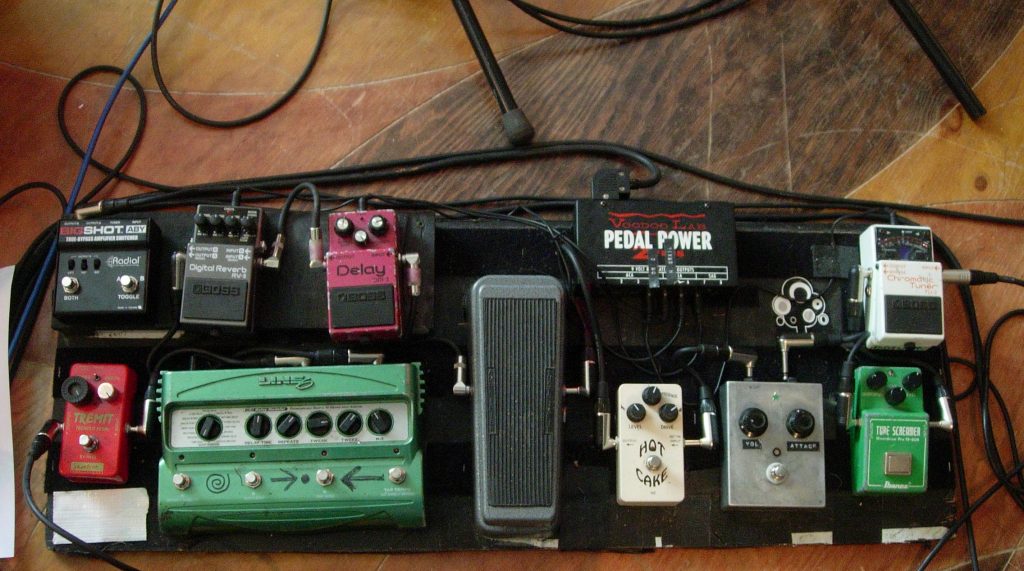
Does Adrian Utley use BOSS pedals in the studio?
I’ve seen plenty of other BOSS pedals lurking around Adrian’s studio, including an SD-1 Super Overdrive. He’s often playing with sound in his studio and will put a synthesizer through a BOSS pedal to completely change the character of it. Adrian is a big fan of the RE-202 Space Echo. As is Stew Jackson. Stew’s got one permanently hooked up on his desk. He uses it constantly.
"After a few years of using crystal clear digital delay, a lot of players realized they really liked the sound of the earlier analog DM-2 Delay."
Portishead has a long history with Space Echo.
When I first toured with Portishead, we used to take out a couple of Roland RE-201 Space Echo units. They would sometimes break down on stage, so people were very happy when the BOSS RE-20 Space Echo turned up. Geoff Barrow uses a Roland SPD pad, and he put that through a BOSS Digital Delay compact pedal. If you listen to “Machine Gun,” there’s a break where he’s playing this really harsh thing and switching it on and off.
When Geoff’s band BEAK> first started, he used the RE-20. He plays the drums and sings at the same time, and his vocal mic would go straight into the RE-20 then into an amp. That was his vocal sound. The RE-20 was sat next to him, and he would change the delay for each song on the fly. He deliberately wanted a distressed vocal sound.
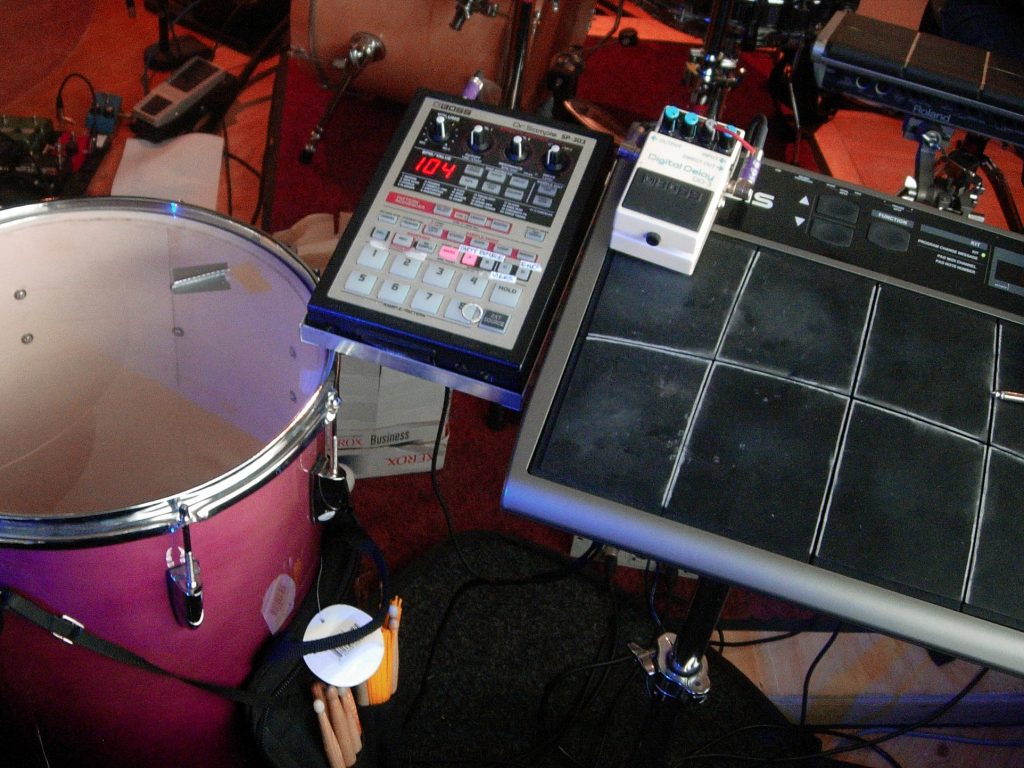
Making Gains
Do you have any tips on using gain pedals?
I’ve been on a long journey with overdrive pedals. I’ve gradually been refining my choices and use the BD-2 Blues Driver a lot. To me, it’s preferable to a Tube Screamer. The Blues Driver is an excellent pedal, and it doesn’t cost an awful lot, either.
The BC-2 Combo Drive was an excellent BOSS pedal, too. A lot of people I know use BOSS pedals like the BC-2, BD-2, and SD-1 to run the signal into the amp reasonably hot. They’ll then use the guitar volume to control how distorted or clean the sound is with their fingertips. That way, you retain the character of your instrument rather than making it sound like you’re suddenly using a different guitar when you step on a pedal.
"I’ve been on a long journey with overdrive pedals. I’ve gradually been refining my choices and use the BD-2 Blues Driver a lot."
Rock Solid
Would you like to see any BOSS classics return?
I always thought the PN-2 was a cool pedal. Tremolo is one of my personal favorites. What’s not to like about a stereo trem? It has that lovely wavy spread to it, which is nice in a room with two amps. The same applies to chorus pedals. That’s something you can use in a studio context as well as live. You could set those stereo effects up on your DAW, no problem.
What do you like most about BOSS gear?
The first two pedals I ever owned I got as Christmas presents in 1982 and they were both BOSS, which shows you the longevity of the brand. One was a CE-3 Chorus, and the other a DM-2 Delay. I’ve still got them, and they’ve never gone wrong. They work as good today as they ever did. That’s one of the things about BOSS pedals I like the most—they’re absolutely rock solid.
Also, BOSS pedals are lightweight and very quiet, which is incredibly useful when touring. I’ve noticed a lot of other pedals get very noisy using different transformers and power supplies at gigs, but I’ve never had any problem with BOSS pedals.
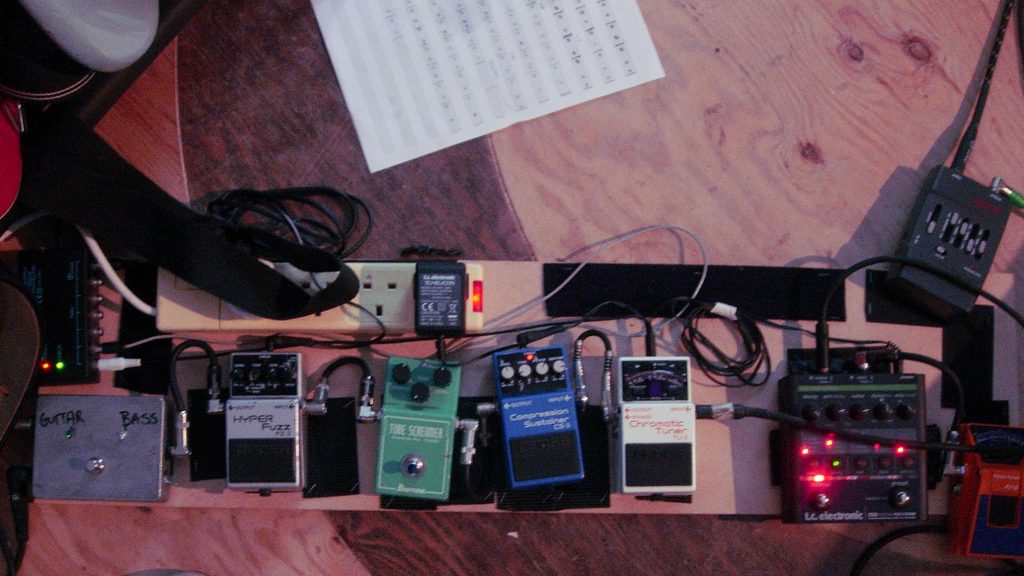
Featured Faves
What’s your favorite BOSS pedal of all time?
I would have to say the DM-2 Delay. I used to put it on everything. When I first started writing songs, I had almost no effects, aside from the DM-2 and CE-3. Even the drum machine and vocals would go through the DM-2. I still use it when I’m playing harmonica for a slapback effect.
What BOSS gear features on your pedalboard?
I use the RE-202 Space Echo, which has replaced my RE-20 Space Echo, because it’s a bit more flexible. I’ve got a BF-2 Flanger I bought from a guy in Bristol when I went to check out a different pedal. He had that and offered me a good price for it, so I snapped it up. I also own a BF-1 Flanger—one of the older BOSS pedals from the 1970s. You can’t power it from the mains; it takes a pair of nine-volt batteries.
I use the GE-7 Equalizer, which is brilliant. So many people go for an overdrive when sometimes all you need is a bit of a hump in the mids. You can step on it and step off it, and it still sounds like you’re using the same guitar. It’s worth trying out a high-midrange boost if you want something to cut through.
"I like using the CE-3 Chorus with a very slow rate and a little bit of a wobble. I’ve been using it live to give the acoustic a little more spread and make it sound a little sweeter."
I like using the CE-3 Chorus with a very slow rate and a little bit of a wobble. It sounds great on acoustic guitar. I’ve been using it live recently to give the acoustic a little more spread and make it sound a little sweeter. I was lucky enough to find a CE-5 Chorus Ensemble in a charity shop when I was on tour with Sharon Van Etten. It’s been on my pedalboard ever since. It’s got some nice EQ options. I also own an RC-300 Loop Station which I do a lot of writing with because it’s so immediate and easy to use.
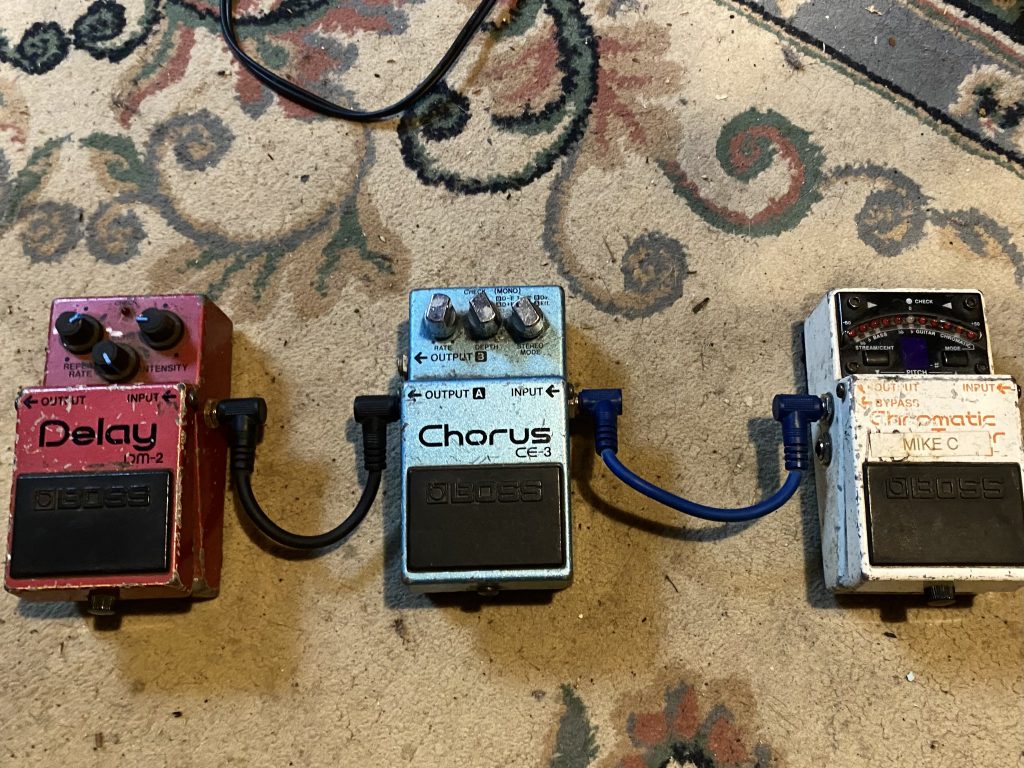
Mythbuster
Have you noticed any common mistakes or myths about pedalboards?
It’s a myth that you can make up for talent with a good pedalboard. It’s always going to be a combination of your ability and the gear you’ve got. It’s never just one or the other. If you’ve got shit gear, nobody will hear how good you are. And if it’s all about the gear, then you’re probably not playing anything interesting.
Also, people talk about the “correct” order of pedals, but you might want a sound that turns all that on its head. So don’t be afraid to experiment. I know somebody (who shall remain nameless) who used to put studio mixes through the BOSS CE-1 Chorus Ensemble. There was something the pedal did that gave everything a nice edge. Probably the preamp. So much studio work is about experimentation. Most people I know rehearse with the same gear they play live with, but it’s different in the recording studio, where there’s a lot more gear to experiment with.
